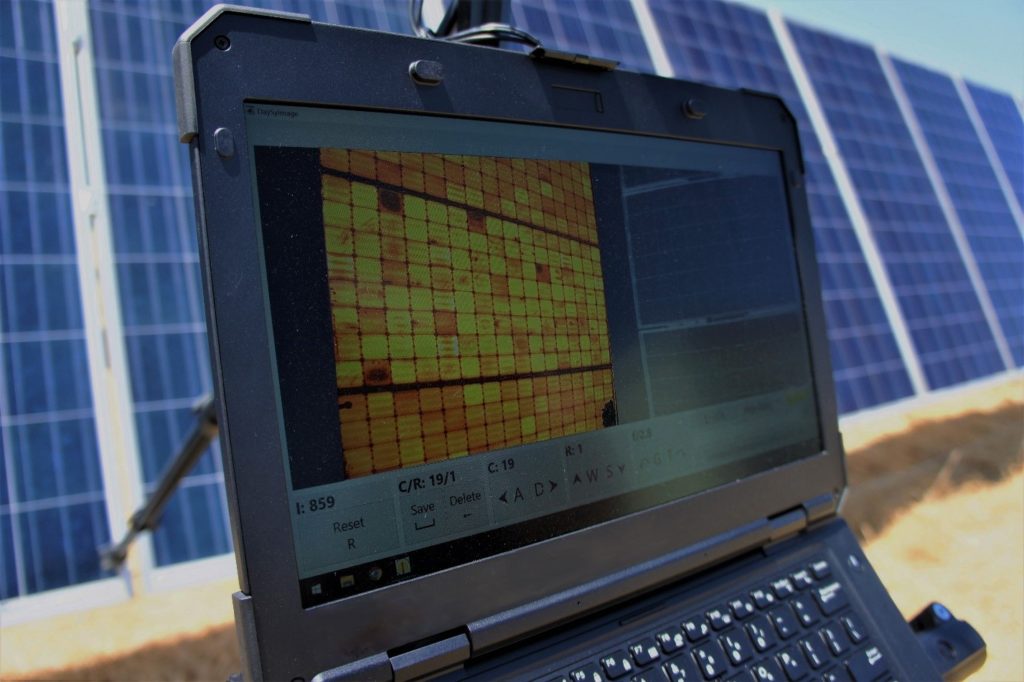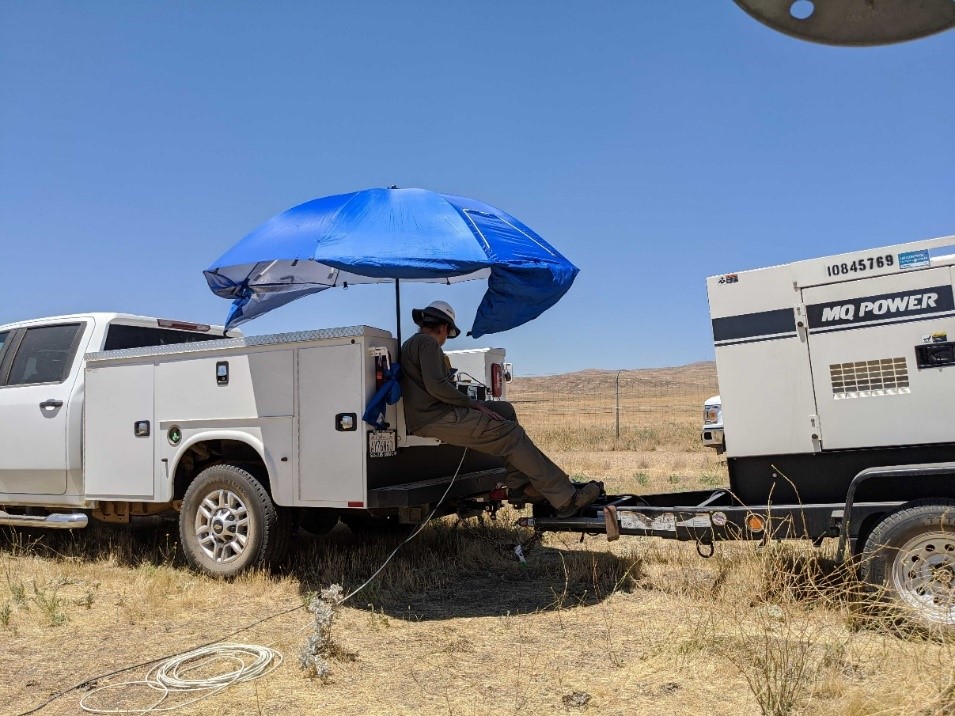Fires cause hidden damage in solar PV assets. Field EL and IV curve tracing helps asset owners assess the full extent of damage for force majeure insurance claims.
This article originally appeared in Solar Power World.
Wildfire season has arrived in California. As a native Californian, I know personally that the fire seasons we face today are longer, more unpredictable and more destructive than they were in the past. There are many reasons for this, but an historic five-year drought that squeezed the state from 2012 to 2016, coupled with drier, hotter, and windier summer and fall months have made fire prediction and prevention more challenging. And despite modest seasonal rainfall over the last few years, much of Southern and Northern California are experiencing mild drought conditions once again. This year’s snowpack in the Sierra Nevada Mountains was roughly half of the normal average, making soils and vegetation drier overall.
As we enter peak fire season (August-November) we remain vigilant, not only to the havoc fires can cause, but also to their impacts on our traditional grid-tied energy resource when power to cities is shut off. Renewable resources, including solar PV, can lessen the effects of wildfire season. PV systems, especially distributed generation systems coupled with energy storage, can actually improve grid resiliency, reduce fire risks and provide back-up power when the grid goes down. The bad news is that solar power systems are also vulnerable to fire damage.
Like most electrical infrastructure, PV equipment, under load, can combust under intense heat and flames. The results can be catastrophic. Wildfires also cause non-visible, systemic damage to solar cells that is easy to overlook during basic visual assessments, especially when project owners must submit insurance claims for multiple significant losses in short order.
In this article, I will discuss the hidden effects of fires on solar PV modules and explain how asset owners and insurance providers can use field electroluminescence (EL) imaging and IV curve tracing to fully assess and document wildfire damage.
Fire Damage at Solar Power Plants
What happens when fire hits a solar power plant? Sometimes the damage is obvious; for example: scorched backsheets, warped tracker torque tubes, embrittlement of metal structures and melted or cracked inverter enclosures, junction boxes and connector cables. When inspecting PV modules, asset owners may notice small bubbles and discolored solar cells that are cloudy or brownish. These are signs that extremely high temperatures have triggered delamination and premature degradation of material components.
But fire damage is not always evident. If the solar cells within a PV module undergo intense heat, say from a fast-moving brush fire that passes nearby a solar array, then thermal stress can cause profound damage. The resulting cell-level cracks, microcracks, scratches and heat spots cannot be detected through visual inspection with the naked eye. The damaged cells can reduce energy yield and create hot spots that cause safety issues over time.

EL imaging is the best way to identify latent damage to solar cells caused by wildfires. Technically speaking, EL relies on the same principle as a light emitting diode (LED). Current is injected into a solar module, a radiative recombination of carriers causes light emission, and the EL image captures the forward-biased light. The amount of light emitted by a region of the module is proportional to the voltage potential of the region, so inactive regions appear dark on EL images. In simpler terms, taking an EL image of a PV module is like taking an X-ray of broken bone. The image reveals the exact locations and severity of cracks, microcracks, scratches and heat spots caused by high temperatures.
Force Majeure Insurance Claims for Solar Projects
It is vital for asset owners to quickly and completely quantify the number of damaged PV modules in their project for force majeure insurance claims. Most insurance policies allow only one claim to be submitted for a given force majeure event. Asset owners are highly unlikely to receive compensation for any property that is left out of an initial claim: policies are usually written with very narrow timeframes for reporting damage.
Depending on project size, failing to report all fire-affected PV modules could mean hundreds of thousands of dollars in lost revenues as energy losses from cell-level damage are realized in the years following the event.
Field EL imaging helps asset owners with insurance claims in three important ways:
- In-field EL imaging helps asset owners quickly identify the full extent of damage to their projects. With accurate site maps in-hand, PVEL can deploy to a site within two weeks. Depending on site conditions and size, PVEL can image between 500 and 1,500 modules per day.
- Asset owners can use the post-wildfire field EL images as documentation to substantiate wildfire insurance claims to prove that latent damage has occurred.
- If EL imaging is conducted early on in a project’s life, ideally at the time of commissioning, those images provide baseline data that further support any future claims from force majeure events.
Once heat and fire damage is identified through EL imaging, sting-level and module-level IV curve tracing can be conducted in the field to further substantiate claims. IV curve tracers measure current and power as a function of voltage to determine if PV modules are underperforming relative to their nameplate power rating. The shape and characteristics of the IV curve also reveal the causes of underperformance; for example, if current, voltage or fill factor are low.
While the full extent of power loss in heat-stressed PV modules is usually realized over a few years, severely cracked or damaged PV modules will start underperforming right away. IV curve traces that show the project is already suffering from power losses can strengthen force majeure insurance claims. They are also required by some insurance providers.
PVEL’s Rapid Response Team
As a California-based company, our team at PVEL works hand-in-hand with asset owners across the West coast to conduct field EL imaging and IV curve tracing. Unlike traditional field EL, which is carried out at night, our field testing processes are performed during the day while modules are installed on racks. This way, the process is more efficient and less expensive. Plus, crews onsite don’t have to cautiously navigate any nighttime critters!
PVEL’s advanced field EL approach utilizes a custom, lock-in near-infrared camera that produces high-quality EL images for clear and complete documentation of damage. IV curve tracing can be conducted by the same crew during the same site visit using an advanced 1500V DC Solmetric PV Analyzer with the ability to measure up to 30A strings.

PVEL’s mobile field testing crew is ready to deploy to project sites in counties across the State of California as well as neighboring states like Arizona, Nevada and Oregon To learn more, contact Andrew Sundling at andrew.sundling@pvel.com.